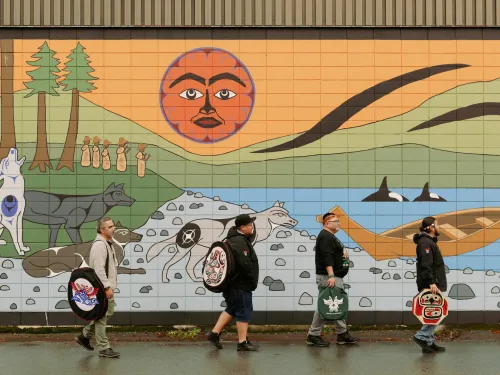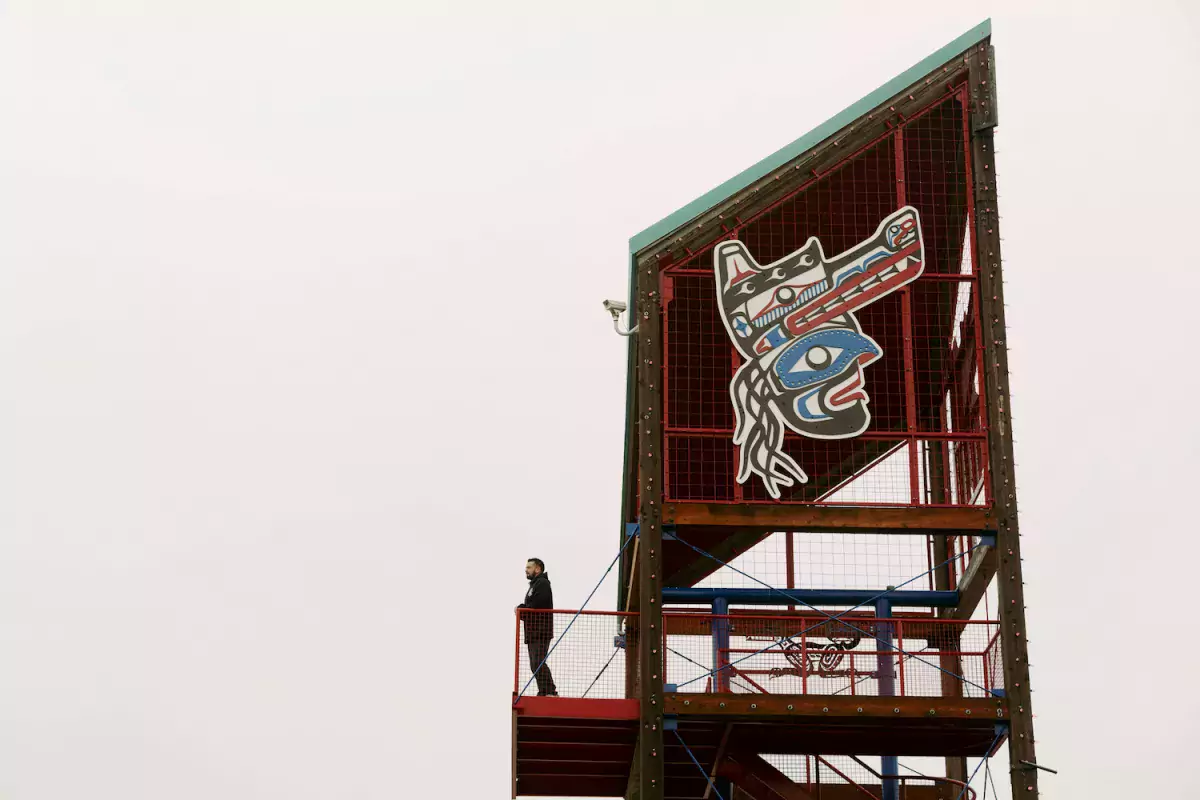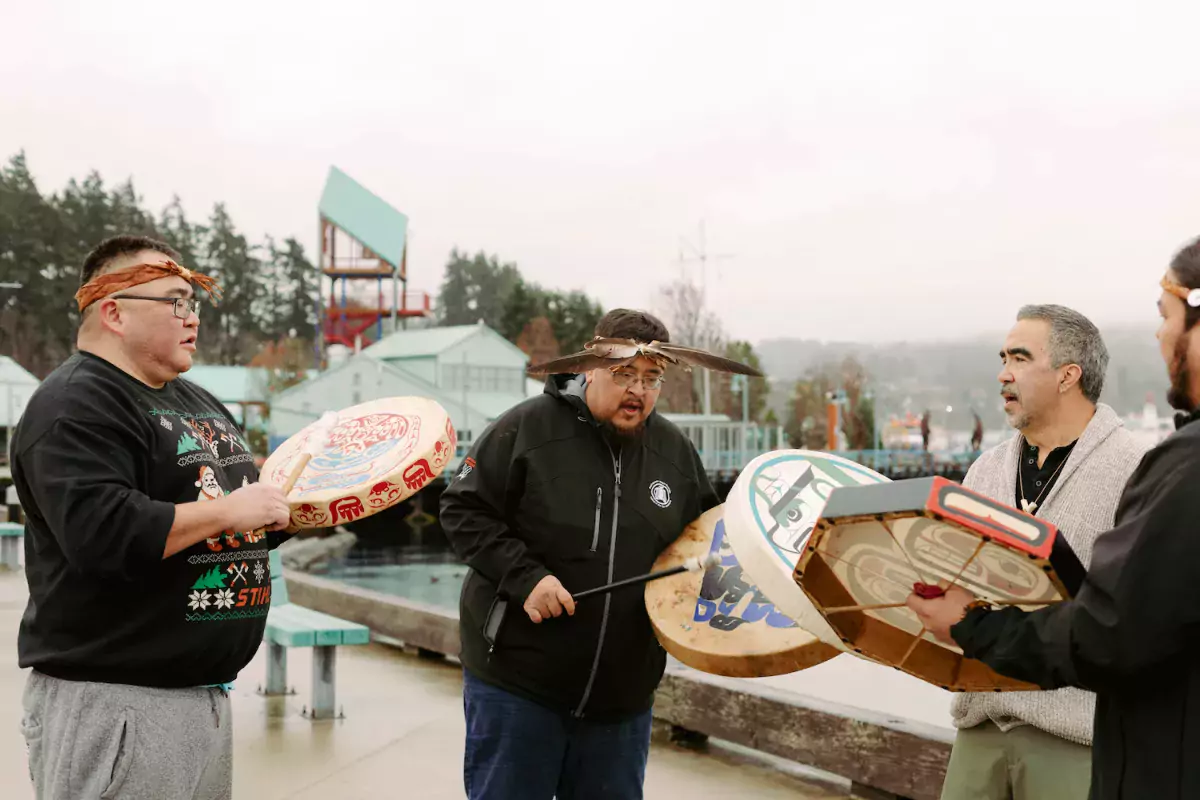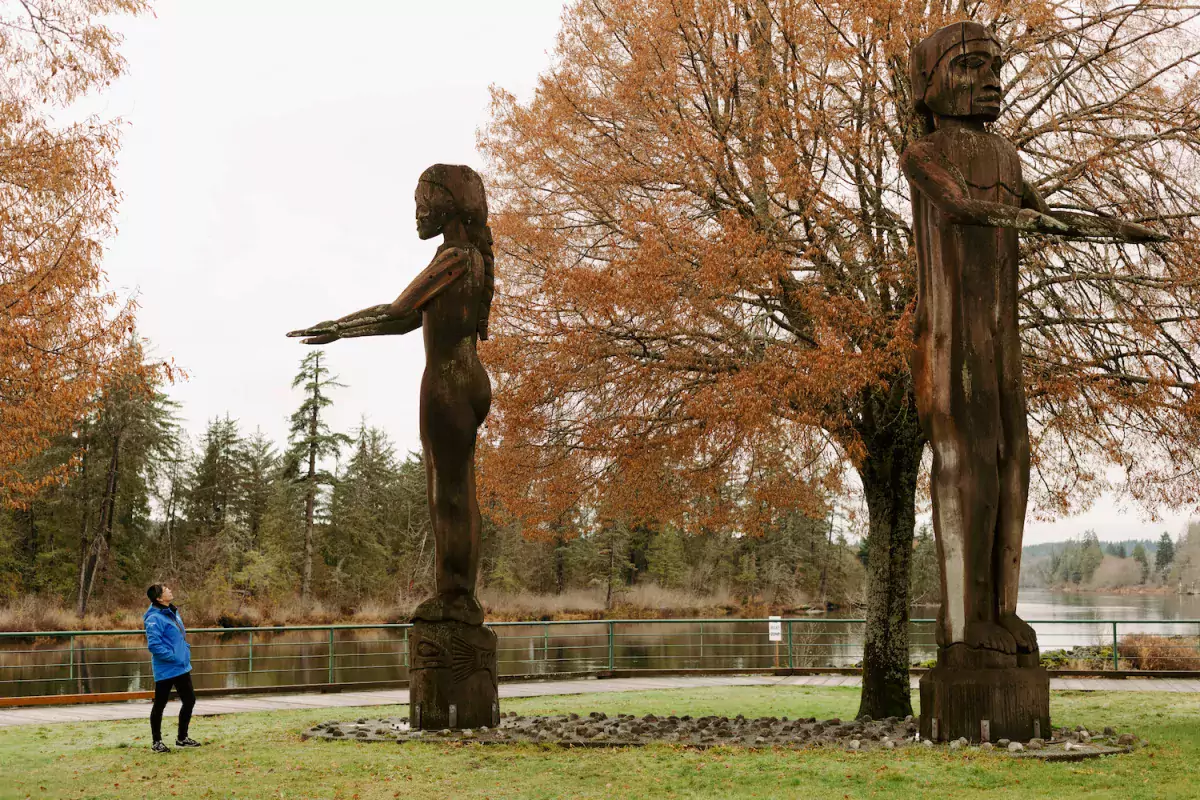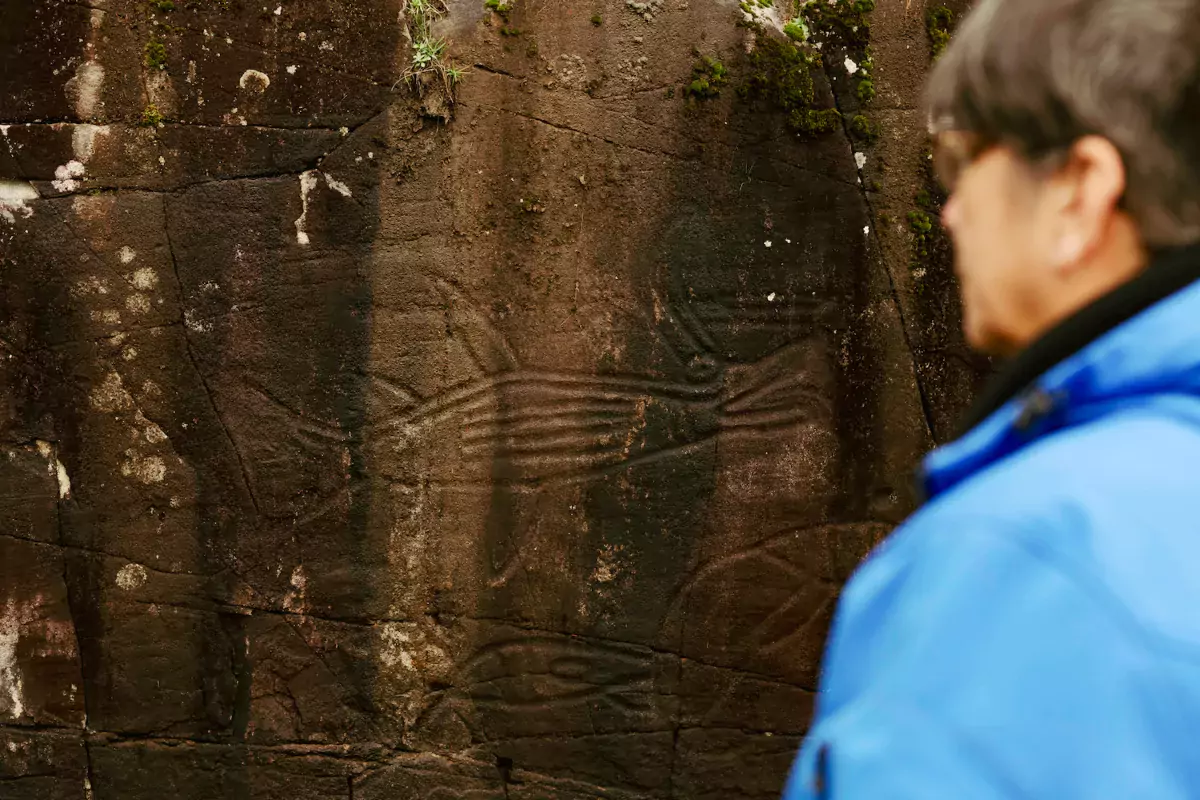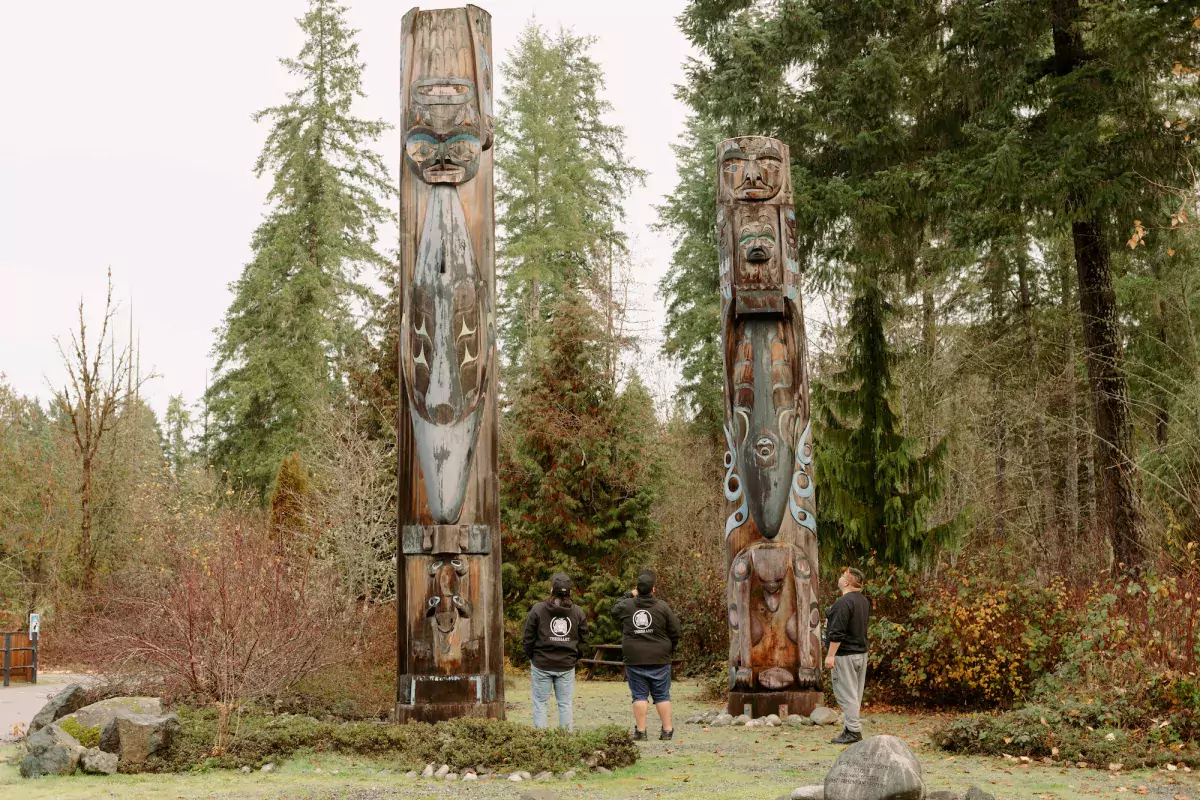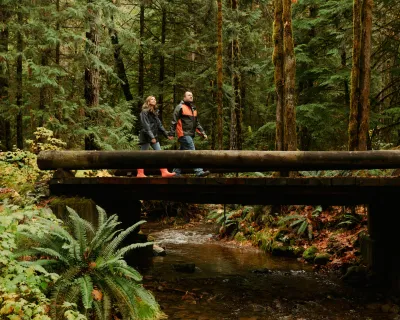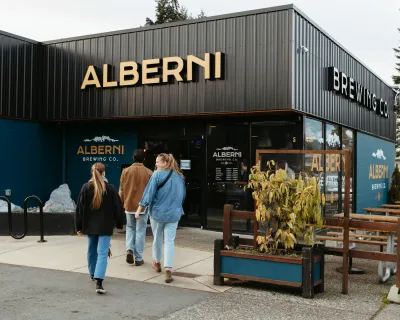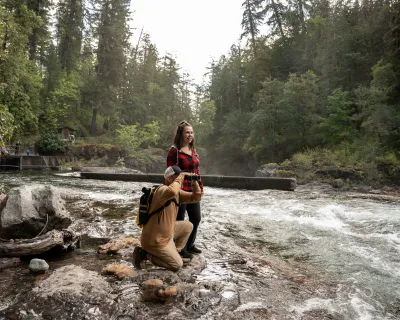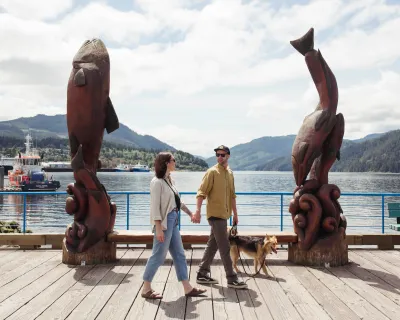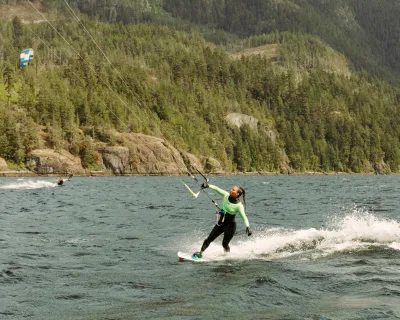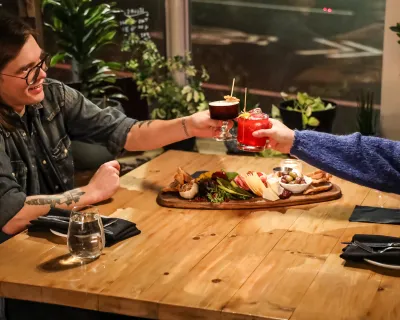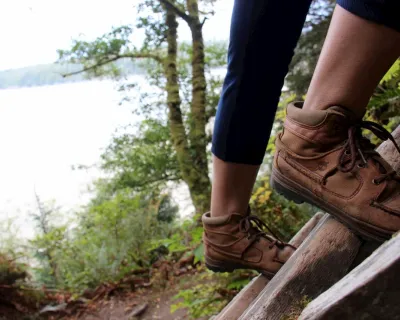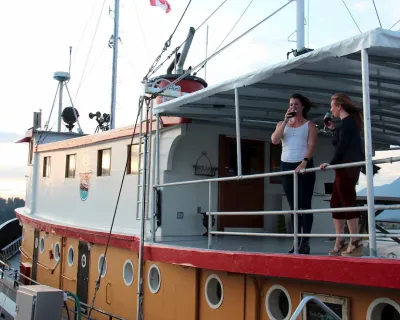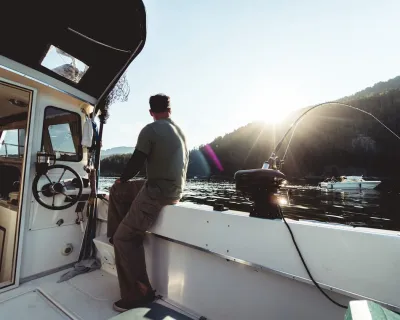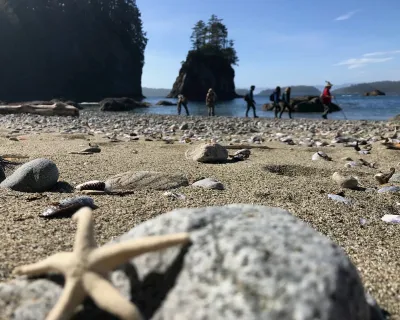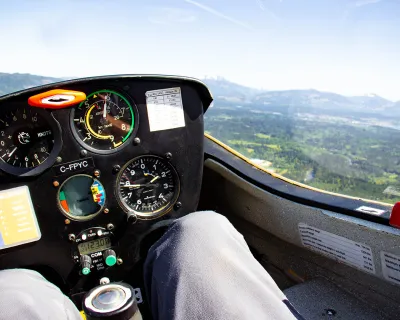Tseshaht, Hupačasath First Nations share heritage, re-ignite traditions
Standing in Harbour Quay, Wahmeesh (Ken Watts) takes a deep breath and finds himself transported to another time. As he looks out towards the Alberni Inlet along the lower Somass River on Vancouver Island, the Tseshaht (c̓išaaʔatḥ, pronounced "sis-sha-ahtah") First Nation Elected Chief Councillor is reminded of his ancestors who occupied these lands.
Wahmeesh said he gets chills just thinking about the sacred ƛuukʷaana ("Tlokwanna") wolf ritual ceremony ceremony that was once practiced here, beneath his feet, in the Tseshaht winter village site of ƛuukʷatquuʔis ("Tlookwatkoowis").
Around 1860, the Tseshaht were coerced by non-Indigenous, European settlers to relocate from ƛuukʷatquuʔis to make way for construction of a mill, according to the Nation.
"ƛuukʷatquuʔis has never been repatriated or properly restored to Tseshaht," the Tseshaht First Nation explains. Now, the ancient village site is occupied by shops and eateries.
As a way to reconnect with the land, Tseshaht First Nation partnered with the City of Port Alberni to transform Harbour Quay's former Clock Tower into the Wolf Tower.
On National Indigenous People’s Day in 2021, the project was unveiled to celebrate the re-awakening of ƛuukʷatquuʔis, the wolf ritual ceremony that was historically practiced at ƛuukʷatquuʔis.
“It's become a symbol of pride for many of our members,” Wahmeesh said. “Tseshaht First Nation’s territory and our homelands are important to us because it tells a story of who we are, where we come from and where we're going."
Artwork by Tseshaht artist Willard Gallic Jr. now adorns the Wolf Tower to commemorate the Nation’s sacred wolf ritual, which was held to prepare its members for their roles and responsibilities of protecting their community.
These ceremonies are rarely spoken of and remain sacred because they have been kept quiet, said Wahmeesh.
“Through different wars and amalgamations, this valley is ultimately where our people ended up,” he said. “It’s pretty amazing to know that our ancestors literally gave up their lives so that we could live here today.”
It’s because of this that Wahmeesh said Tseshaht feels a sense of responsibility to take care of the land and those visiting it. Around one million people drive through the Alberni Valley on their way to the west coast every year. (To experience Tseshaht culture on your visit, check out Wahmeesh's suggestions in this itinerary.)
“I hope the average Canadian and visitor can see how much Tseshaht people have accomplished and how resilient we are,” said Wahmeesh. “Despite all the atrocities, we’re still here, and we’re not going anywhere.”
See Port Alberni through the eyes of the First People, as you travel within these lands.
There are many overlaps between Tseshaht and Hupačasath First Nations’ traditional territory, said Brandy Lauder, Hupačasath First Nation’s chief councillor (English pronunciation is inexact for Hupačasath, but an approximate pronunciation is "who-pet-cha-set"). Both nations reside in what is now known as the Alberni Valley.
Upstream from the Wolf Tower, Hupačasath’s welcome figures stand tall at the Victoria Quay. When Huu-ay-aht, Tseshaht and Uchucklesaht First Nations would visit Hupačasath for potlatches in the winter, Lauder said they would travel by canoe. The welcome figures would greet guests to their territory as they arrived.
Before European settlers arrived on the west coast, Lauder said Hupačasath would display welcome figures in front of their homes. These dramatic figures carved out of wood commonly have their arms extended with their palms held upright.
With most people now arriving by car, Lauder said the welcome figures face the Alberni Highway to greet those entering the valley. With that greeting comes both a welcome, and a reminder. When entering these homelands, Lauder asks visitors to follow Hupačasath example: "respect the land, and it will respect you."
(For some ways to respectfully explore the Alberni Valley, Lauder shares some of her tips in this itinerary.)
Archeological records indicate that Hupačasath peoples have lived in the valley for at least 8,000 years, Lauder said.
Evidence of this is highlighted through the petroglyphs that are carved into a rock face along Sproat Lake.
These rock carvings are thought to have been made with a sharpened stick. Nine are still visible today and illustrate a killer whale with a large, dorsal fin, along with other sea creatures.
According to oral history, Lauder said that after a tsunami hit Port Alberni in the 1500s, a killer whale got trapped in Sproat Lake. After the whale died, Lauder said her ancestors looked inside its belly to determine where it came from.
“[They] saw all these new vegetables and all these new fish that [they] hadn’t seen before,” she shared. “It was such a spectacular find that they had it carved [as] petroglyphs to mark the occasion.”
The petroglyphs are named k’ak’awin, after the killer whale carved on the main panel, said Lauder. As the chief councillor reflected on these historical legacies of her ancestors, she said she can’t couldn’t imagine living away from them.
“I was born here,” she said. “I was raised here and I’ll die here.”
When Wahmeesh thinks about the future of the Alberni Valley, he becomes flooded with excitement. The revitalization of the Wolf Tower was a stepping stone for Tseshaht members to reconnect with a site they had been separated from.
“I hope that the entire Alberni Valley is something all of our kids are really proud of and have a deep connection to,” said Watts. “This is just the beginning.”
When you go
Connect to the culture of the Tseshaht and Hupačasath, with tips from Wahmeesh and Brandy Lauder in this Alberni Valley Tourism itinerary.
About the people of this land
The Alberni Valley lies within unceded territory of the Tseshaht First Nation (sis sha ahtah) and Hupačasath First Nation, two of the fourteen Nations of the Nuu-cha-nulth Peoples on western Vancouver Island.
Getting here
Port Alberni resides within the Alberni Valley—about an hour drive from Nanaimo. Check in with Alberni Valley Tourism for a wealth of local tips to explore the area.
Glossary
Get to know the languages of the Tseshaht First Nation (sis sha ahtah) and Hupačasath First Nation, with this glossary of terms from the article.
nuučaan̓uł: proper name and spelling of the Nuu-chah-nulth
c̓išaaʔatḥ: proper name and spelling of the Tseshaht, pronounced sis-sha-ahtah
ƛuukʷatquuʔis: Tseshaht winter village site, pronounced Tlookwatkoowis
ƛuukʷaana: Tseshaht wolf ritual ceremony, pronounced Tlokwanna
čuu: Goodbye, ok or to acknowledge, pronounced choo
ƛ̓ekoo: Thank you, pronounced kleco
For more language education, visit the Tseshaht First Nation language page on Facebook.
More Alberni local tips
This is the third in a new 2023 #ExplorePortAlberni series, Love for the Alberni Valley, featuring local tips. Explore the rest of the series and check out more Port Alberni experiences to inspire your next visit.
Like Our Facebook Page
